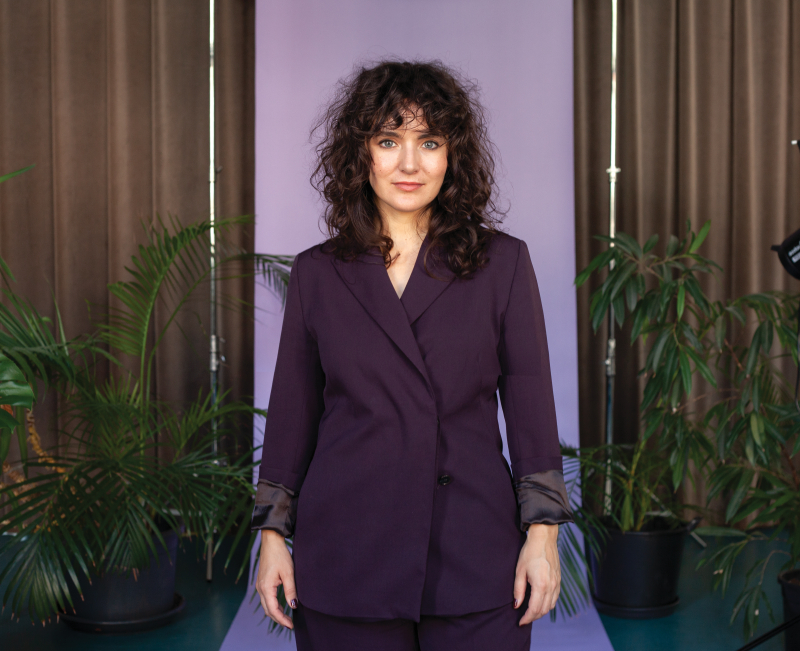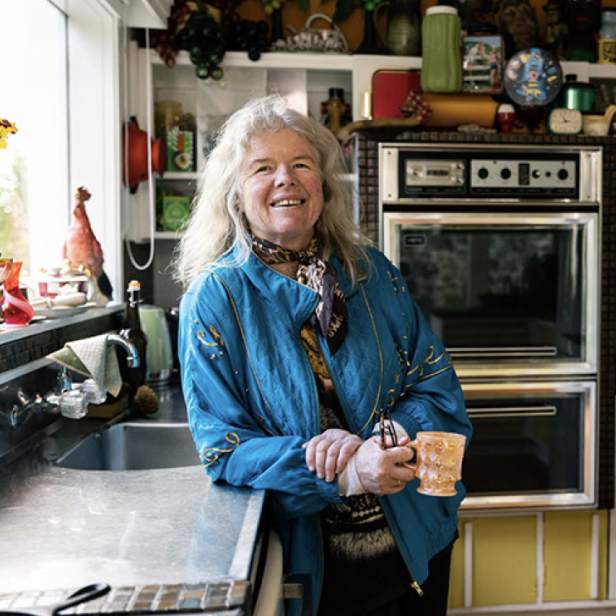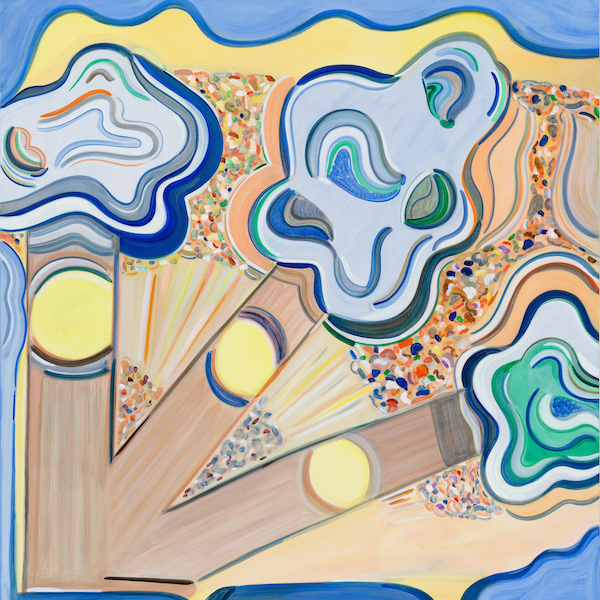Pilar Mata Dupont: Dark Past; New Hope
Reflecting on a haunting familial past, Pilar Mata Dupont grapples with the fractured narrative of her ancestry in dark, beautiful and theatrical images.
Words: Andrew Nicholls
Photography: Lili Huston-Herterich
Informed by her ancestry and upbringing in the settler-colonial cultures of Argentina, Australia, and Brunei, multidisciplinary artist Pilar Mata Dupont makes work that aims to probe accepted Eurocentric understandings of history, beauty, and power. Employing video, performance and photography, and drawing upon her twin backgrounds in musical theatre and visual art, she engages with highly staged and cinematic aesthetics, frequently collaborating with performers to create alternative interpretations of historical texts, with a particular sensitivity to trauma, colonial dread and alienation.
Mata Dupont initially rose to national attention through her decade-long partnership with Tarryn Gill (represented by Gallery Sally Dan-Cuthbert, Sydney), which included winning the Basil Sellers Art Prize in 2010 for their epic video work Gymnasium, and a major 10-year retrospective at Perth Institute of Contemporary Arts the following year. She has spent the subsequent decade building her impressive solo practice internationally. Working between Perth and Rotterdam since 2014, she has held solo exhibitions across Australia, Chile, Finland and the United States and participated in group exhibitions and festivals internationally and across Australia, including premiering a major work at the Art Gallery of New South Wales, Sydney for The National in 2019.
Of particular relevance to Mata Dupont’s practice throughout this time was her extended family’s complex history in Argentina which, as related to her by various relatives, incorporates wildly clashing memories of events. Since 2013 she has been grappling with this confronting subject matter via extensive research, writing, and a series of residencies intended to inform a major feature-length film with the working title A Negative Genealogy.
The trajectory of what was already an ambitious undertaking was abruptly halted mid-way through progressing the work in Argentina in February 2020. Mata Dupont was shooting footage at the site of her former family ranch in the remote Pampas, when in (ironically cinematic) fashion, the sudden, military-led Covid-19 lockdown forced her to frantically flee on the last overnight bus to Buenos Aires before the country shut down. Back in the Netherlands with a body of unresolved work and facing a more than six-month lockdown, an invitation to develop a work for Prototype, a digital platform curated by Lauren Carroll Harris, allowed her to begin adapting the existing, partially-realised research.
Re-thinking the feature film as a fragmented suite of shorter video, photographic and text-based works is something the artist has grown to embrace, in keeping with the fractured and unresolved nature of her relationship to her ancestral past. A further commission for Sydney’s Artspace 52 Artists/52 Actions program has allowed the continuation of the project, as has a current exhibition with her representative gallery, Moore Contemporary, Perth.
This exhibition will present La Maruja, a series of photographs and the video work developed for Prototype, which draws from her Argentinian residencies. While delving into her family history, Mata Dupont interviewed family members about María Cristina, her great-great grandmother, and found references to her in archival interviews recorded by her father. Upon marrying into the Mata family, Cristina was moved to their family ranch La Maruja, a diminutive of the name Maria, but also a pejorative term, as Mata Dupont explains, referring to “an older woman who dedicates herself solely to domestic tasks, gossip and television”; Cristina soon renamed the property Destierro, meaning exile. She had several children, one of whom was taken from her and given to childless relatives. In the ensuing years, Cristina died from a painful bacterial illness without seeing him again.
Mata Dupont’s haunting video work presents a fractured narrative drawing upon this mysterious and tragic history, mixing gloomy footage of the wonderfully gothic Destierro with highly-staged vignettes of a female spectre. The work explores themes of motherhood, trauma, the colonial gothic, theatricality and alienation, as well as her own misinterpretation of her family history, via an opening sequence of Telenovela characters spouting post-structuralist philosophy and criticising the artist’s limited grasp of Spanish.
The video and six accompanying photographs show at Moore Contemporary until late October 2021. She has another solo exhibition opening in October 2021 at Adelaide’s Samstag Museum of Art, the Australian premiere of her 2018 work, The Ague. A development commission from the Ian Potter Moving Image Commission, supported by ACMI, Melbourne, will also result in a screenplay titled La Piedra (the stone), a fictional interpretation of the same material that has informed A Negative Geneology.
MARGARET MOORE – FOUNDER AND DIRECTOR, MOORE CONTEMPORARY, PERTH:
I have been familiar with Pilar’s practice for many years and have always found it considered and intelligent. An enduring commitment to high level production values means that her work across media has always offered aesthetic finesse. Over the past decade I have especially enjoyed Pilar’s evolution as an individual practitioner and seeing her establish a rich artist voice.
I appreciate the research and sensibility that she brings to her work. She has a unique capacity for combining a heightened theatrical visual sense with astute socio-political and cultural investigation. Her strengths lie in image-making and choreographing content to elucidate her interest in alternative histories, meanings or memory.
Her current exhibition La Maruja comprises a single channel video and a suite of six new photographic images presented face mounted under acrylic on aluminium. The single channel video is priced at $7,500 and the photo prints $6,000 each.
Pilar’s work is held in two Australian state gallery collections, several university and corporate collections and select private collections.
I see Pilar aligned to other excellent contemporary practitioners who traverse mediums and who clearly have the capability to expand their film-making directions while holding their own in the contemporary art museum realm.
LAUREN CARROLL HARRIS – CURATOR, PROTOTYPE:
I first became enthralled with Pilar’s video work Mountain, which imagined a conversation between Sigmund Freud and a Nazi-like tyrant. Set in the German alps where Adolf Hitler used to holiday, the work was a strange, evocative investigation of place, politics and psychology.
It was richer, more elliptical, layered and imaginative than anything I’d seen in some time in a gallery or cinema. Pilar’s work is deeply researched in its investigations of history, but she hasn’t lost that connection to intuition. She’s making political work, while appealing to something more than intellect.
She is at the forefront of artists working through their cultural heritage and our political history within the realm of moving image. It’s a strong trend in contemporary art today, but Pilar is interesting in that she’s very consciously incorporating elements of narrative, cinema and documentary into video art in a highly emotive and skilful way. Pilar is tapping into some very acute tensions in contemporary culture – how can art help us make a conceptual break with colonialism, how can we grapple with history honestly? What structural and political changes would have to follow these cultural discussions? Where does your family legacy and lineage sit within these structures? How has our political culture intruded on our dreams and inner worlds, and how might we escape?
This article was originally published in Art Collector issue 99, January-March 2022.









